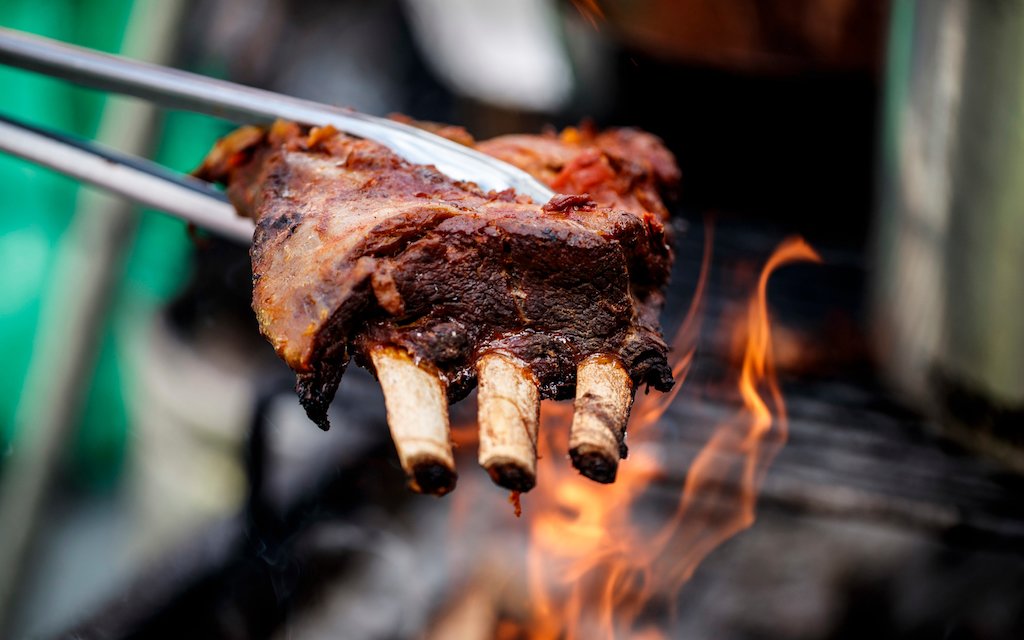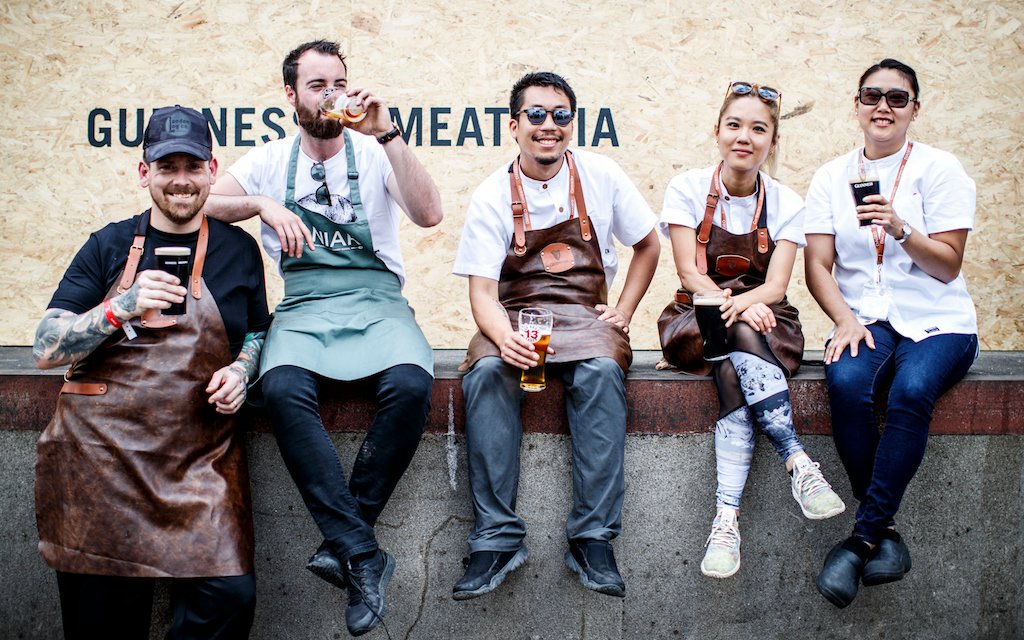In 2017, the Guinness Storehouse in Dublin welcomed 1,711,281 visitors. Not only is that 200K more than in 2016, it’s about 4,688 people every single day. Needless to say, that makes it the number-one tourist attraction in Ireland.
Like all institutions of that ilk, it automatically invites disdain from a certain sect of do as the locals do globetrotters. For most of the millions who weave their way through the Storehouse’s halls of history and Instagram opps on a black-stuff-buzz, it’s a one-time experience.
But whether you’ve been there, done that or purposely avoid the top-five tourist attractions in any given location, your Guinness tour doesn’t have to end at St. James Gate. The history of the company (and the family behind it) is interwoven with the history of Ireland itself, and as such the country abounds with Guinness-linked monuments, relics and off-the-beaten-path destinations that’ll give you a few good stories to tell back home.
So we spoke to the experts behind the “pork chop in a glass” to put together the ultimate Guinness tour of the Emerald Isle, from a decadent festival called Meatopia to the bucolic resting place of Arthur Guinness.
It includes exactly zero Gravity Bars.
DUBLIN
The Open Gate Brewery (map)
As Thomas Street turns into James Street and you approach the turnoff into the St. James Gate brewery complex, there is a recessed black gate in a low wall emblazoned with the word Guinness in gilded letters. A sign we’re almost to the Storehouse, tourists think. Wrong! This is the entrance to the company’s experimental Open Gate brewery. It’s been around for a century, but only opened to the public three years ago. Drop in Thursday, Friday or Saturday for the Irish translation of your favorite craft brewery, but make sure to buy a ticket beforehand (which includes a beer tasting board).
Meatopia
Better yet, plan your trip during the next Meatopia. An annual carnivorous bacchanal, it’s held within the grounds of Open Gate and brings in chefs from around the world to grill ethically sourced meats over open flames while you watch. Then those dishes are paired with beers both familiar and experimental. (When we went this summer, the event-exclusive brews were a Gooseberry Sour and an intriguing Salt and Pepper Ale we kept coming back to.) And if you can’t wait until 2019, Open Gate is expanding to add top-notch eats year-round.
The Church Cafe, Bar and Restaurant (map)
Consecrated in 1701 as St. Mary’s Church, then deconsecrated in the late 20th century, the Church is now four floors (and a terrace!) of food and drink. If you’re in the mood for a pint, sidle up to the east end of the bar next to the bust of Arthur Guinness (the brewery’s founder). He was married at St. Mary’s in 1761.
— Recommended by Michael Ruse, Guinness Ambassador
Farmleigh House and Estate (map)
Located on the northwest end of the sprawling Phoenix Park, the Farmleigh property was purchased in 1873 by Edward Cecil Guinness, Arthur’s great-grandson who eventually became 1st Earl of Iveagh. It stayed in the family until 1999, when Edward’s great-great grandson (also named Edward and an Earl of Iveagh) sold the estate to the Irish government for a tidy €29.2 million. Now, Farmleigh is the official Irish State Guesthouse. When dignitaries aren’t visiting, it’s open for 60-minute tours, or free strolls through the grounds. Make sure to inquire about items the Guinness family loans to the house, seek out the native Kerry cattle and head down to the lakeside Boathouse cafe for a cup of coffee.
— Recommended by Michael Ruse, Guinness Ambassador
St. Stephen’s Green (map)
A much-needed foliage-enclosed sanctuary on the south end of Grafton Street, this park was made public in 1877 at the behest (and from the checkbook) of Arthur Edward Guinness, another great-grandson of the founder. A sizable statue was erected in his honor on the west side, but the casual observer may miss it because the main marker reads “Lord Ardilaun,” as he became the 1st Baron Ardilaun of Ashford in 1880 when the park officially reopened.
Iveagh Gardens (map)
Somehow a less frequented, hidden gem of a park (despite being a stone’s throw from Stephen’s Green), the Iveagh Gardens were also a gift to the people of Ireland from a Guinness. This time, it was Rupert, 2nd Earl of Iveagh, who offered it on the condition that this “lung” of Dublin not be developed.
St. Patrick’s Cathedral (map)
While the church has undergone many changes since the 9th century (the oldest documented reference), arguably the most important was in the 1860s, when they considered demolition because it would’ve been cheaper than restoring the building. Then Benjamin Lee Guinness, Arthur’s grandson and member of the congregation, swooped in “to fund a full-scale restoration of the building on the condition that the governing body of the Cathedral gave him free rein to make whatever decisions he thought appropriate in the design of the building,” according to St. Patrick’s. The Guinness family remains a staunch benefactor.

Team photo and logo via St. James Gate F.C.
St. James Gate F.C., Iveagh Grounds (map)
In 1902, Sir John Lumsden, a medical officer for Guinness, helped found St. James Gate FC, a soccer “works team” composed of Guinness employees. Their dream team was in the 1921-22 season, when they took home three titles: the League of Ireland, Leinster Senior Cup and FAI Cup (though the latter ended with a gun being drawn in the locker room). The team is no longer affiliated with Guinness, but they still play home games in the Iveagh Grounds complex in the Crumlin neighborhood. These fields go back to Lumsden in 1928 and are named after the person who donated the land: Edward Guinness, first Earl of Iveagh. No public-facing supporter group exists, but follow them on Facebook for match dates and bring a folding chair.
The Iveagh Trust (map)
While not open to the public, these buildings opposite St. Patrick’s Cathedral are an important part of the Guinness legacy. The Trust was founded in 1890 by the 1st Earl of Iveagh to provide affordable housing for Dublin’s poor. The Guinness Partnership, a sister institution, was also founded in England, and the family still manages these efforts today.
CASTLEBRIDGE
Castlebridge House (map)
Did you know that the Guinness World Records gets its name from the same family as the beer? It all goes back to this house and its adjacent cast-iron rotunda conservatory, located in the middle of the village of Castlebridge. In 1951, Sir Hugh Beaver, managing director of Guinness, was shooting game birds in County Wexford with Joshua Nunn when they got into an argument over which was the fastest: Golden plovers or grouse? That night at Castlebridge, Nunn’s house, they couldn’t find a reference book to settle the matter, so a few years later Beaver decided to create his own: The Guinness Book of Records. The first edition was given out for free to settle similar pint-incited disputes. While a sign in the park explains this history, the actual building is in need of a robust conservation effort.
Arthur’s Bar, photo via the Court Yard Hotel
LEIXLIP
The Court Yard Hotel (map)
Scroll through the Guinness page on Wikipedia, and you’ll find this sentence: “The company was started in 1759 in Dublin.” Well, that’s not entirely true. When Arthur was 31, he founded his first brewery in the town of Leixlip, where the Court Yard Hotel now sits. The Guinness Storehouse famously houses the 9,000-year lease Arthur signed for St. James Gate, but the Court Yard displays the earlier lease Arthur signed on September 13, 1756, for this original site.
— Recommended by Ian Colgan, Certified Beer Sommelier and Guinness Ambassador
St. Mary’s Church (map)
While you’re in town, stop by (another) St. Mary’s to see the resting place of Archbishop Arthur Price, who died in 1752. When he passed, he bequeathed £100 (roughly $28K today) to both his servant Richard and his son: Arthur Guinness. So next time you raise a pint, make sure to thank Archbishop Price first.
Leixlip Castle (map)
Built in the late 12th century by Adam de Hereford, a first-gen Norman invader, the castle eventually came into the hands of Desmond Guinness, great-grandson of the 1st Earl of Iveagh and co-founder of the Irish Georgian Society, which works to preserve Irish architecture. It’s open to visitors, but only during limited times of the year, as Desmond still resides there.
CELBRIDGE
Castletown House (map)
A gobsmacking Palladian house worthy of its name, also saved from developers by architecture aficionado Desmond Guinness. But this one’s easier to visit since it’s open every day, and admission to the grounds is free. House entry and guided tours are a mere €10.
The Mucky Duck (map)
Legend says Arthur Guinness was born in this pub back in 1725. Unfortunately, the bar underwent a renovation a few years back, dropped the “Mucky,” lost most of its charm and is now on the market. It’s still worth dropping by to see the plaque noting Arthur’s (alleged) birthplace. If the vibe isn’t right, drop into one of the many adjacent pubs. But don’t leave town before snapping a photo with the full-blown statue of Arthur just down the street. (Funny enough, a bar of the same name resides in, of all places, Captiva Island, Florida.)
— Recommended by Ian Colgan, Certified Beer Sommelier and Guinness Ambassador
ARDCLOUGH
Oughterard Cemetery (map)
The final resting place of Arthur Guinness. This is a true pilgrimage, as Ardclough is a small town of only a few hundred residents. And in contrast to the Disney-esque ubiquity of Guinness in Dublin, there is no fanfare here. Be on the lookout for a rustic stone tower on a hilltop, then head thataway.
“Ashford Castle, Ireland” by Larry Koester is licensed under CC BY 2.0
Mayo
Ashford Castle (map)
The country estate of the Guinness family from the 19th century until 1939, where they hosted the King and Queen of England, it’s now a consistent “Best Of” list hotel thanks in no small part to the $75 million renovation in 2015. During your stay, make sure to take advantage of the 350 acres by taking their hawks out for a walk.
KILLARNEY
Muckross House (map)
Another architectural gem saved from developer maws by the Guinnesses, specifically Arthur Edward (or Lord Ardilaun). The Victorian mansion sits within the grounds of Killarney National Park, the country’s first. The 25,000+ acres feature an abundance of trails that’ll keep you occupied for a whole day if you’ve had enough historically significant interior design.
OR TAKE THE TOUR …
Arthur’s Way
A 10-mile, one-way hike or bike ride that will take you through the life and legacy of Arthur Guinness, created by local researchers and including many of the locations mentioned here. It begins in Leixlip and ends, appropriately, at Oughterard.
Main photo: “Ashford Castle, Ireland” by Larry Koester is licensed under CC BY 2.0
This article was featured in the InsideHook newsletter. Sign up now.


























